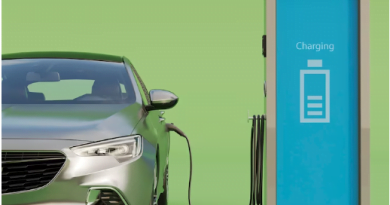What are Electromechanics? Basic Concepts, Components, Working, Types, and applications?
What are Electromechanics? Basic Concepts, Components, Working, Types, and applications?
Table of Contents
Introduction to Electromechanics
Fundamental Concepts in Electromechanics
- Electromagnetic Induction
- Lorentz Force Law
- Generators and Motors Principles
- Power Electronics
- Feedback Control Systems
Major Components of Electromechanical Systems
- Electric Generators
- Electric Motors
- Transformers
- Actuators
- Sensors
- Power Electronic Drives
Working Principles of Electromechanical Systems
- Generating Electricity
- Converting Electrical Energy into Motion
- Changing Voltage, Current, or Frequency
- Regulating Speed, Torque, Position
- Sensing Mechanical Quantities
- Closed-Loop Control
Types of Electromechanical Systems
- Rotating Machinery
- Linear Actuators
- Electric Relays
- Robots and Automation
- Sensors and Transducers
- Vehicular Systems
Modeling and Analyzing Electromechanical Systems
- Mathematical Modeling
- State-Space Representation
- Transfer Functions
- Dynamic Response Analysis
- Numerical Simulation
Major Application Areas of Electromechanics
- Industrial Drives and Automation
- Robotics and Mechatronics
- Transportation Vehicles
- Process Control
- Consumer Appliances
- HVAC and Refrigeration
Recent Advances in Electromechanics
- Power Dense Motors and Generators
- High-Efficiency Power Electronics
- Advanced Materials and Manufacturing
- Improved Modeling and Control Algorithms
- Increased Systems Integration
Future Outlook for Electromechanical Systems
- More Autonomy and Intelligence
- Improved Sensing and Actuation
- Extended Operational Envelopes
- Increased Reliability and Safety
- Expanded Applications
Conclusion
What are Electromechanics? Basic Concepts, Components, Working, Types, and Applications
Introduction to Electromechanics
Electromechanics is the coupling of electrical and mechanical systems where electrical energy is converted to mechanical motion or vice versa. This multidisciplinary field combines electrical engineering concepts like power electronics and control systems with mechanical engineering disciplines such as dynamics, vibration, and material mechanics. Electromechanics underpins countless applications, from tiny sensors to high-power electric vehicle drives. One can gain valuable insight into this field that enables robotics, transportation, automation, and other modern technologies by studying component behavior, system architectures, modeling techniques, and design methodologies.
Fundamental Concepts in Electromechanics
Several foundational principles govern electromechanics:
Electromagnetic Induction
Changing magnetic fields inducing currents enables generators to produce electricity.
Lorentz Force Law
Electric currents produce forces proportional to magnetic field strength, allowing motors to generate torque.
Generators and Motors Principles
Interactions between magnetic fields and conductors allow bidirectional electrical and mechanical power conversion in rotating machines.
Power Electronics
Solid-state switches efficiently regulate and convert electrical voltages and currents to drive motors.
Feedback Control Systems
Sensors provide output control systems used to regulate speed, position, torque, and other electromechanical parameters.
Major Components of Electromechanical Systems
Key elements include:
Electric Generators
Convert mechanical rotation into electrical power through electromagnetic induction.
Electric Motors
Transform electrical energy into mechanical torque based on Lorenz forces.
Transformers
Allow voltage or current transformation through magnetic coupling between electrical circuits.
Actuators
Devices like motors manipulate system states by converting signal inputs into physical motions.
Sensors
Transducers that convert system states like position or force into measurable electrical signals.
Power Electronic Drives
Electronics are used to control the direction, speed, and torque of electric motors.
Working Principles of Electromechanical Systems
Fundamental operating principles involve:
Generating Electricity
Induction generators rotate coils within magnetic fields to induce voltage.
Converting Electrical Energy into Motion
Currents flowing in motor windings surrounded by magnetic fields experience force-inducing torque.
Changing Voltage, Current, or Frequency
Transformers leverage magnetic flux coupling between coils to modify electricity supply parameters.
Regulating Speed, Torque, Position
Sensors provide feedback signals to control systems that actuate drives regulating motor operation.
Sensing Mechanical Quantities
Transducers convert parameters like system position or force into electrical outputs measurable by control systems.
Closed-Loop Control
Control algorithms continuously correct deviations from desired setpoints by comparing sensor readings against target values.
Types of Electromechanical Systems
Electromechanical systems encompass:
Rotating Machinery
Motors, generators, pumps, compressors, turbines, and other rotating equipment.
Linear Actuators
Hydraulic, pneumatic, or electric actuators that generate forces and motions in a straight line.
Electric Relays
Switch gears that use electromagnetism to open or close high-current electric circuits remotely.
Robots and Automation
Electromechanical robotic systems with electrical controllers, motor drives, and mechanical arms.
Sensors and Transducers
Devices that convert physical system states like temperature or position into electrical signals.
Vehicular Systems
Automotive, aerospace, locomotive, and marine system components like alternators, actuators, and control electronics.
Modeling and Analyzing Electromechanical Systems
Mathematical models represent system behaviors:
Mathematical Modeling
Developing equations describing electrical, mechanical, and coupled interactions.
State-Space Representation
Modeling systems dynamics using state vector differential equations.
Transfer Functions
Models expressing input and output relationships in terms of Laplace transforms.
Dynamic Response Analysis
Studying transient and steady-state system responses to understand stability, settling time, and accuracy.
Numerical Simulation
Software tools solve model equations over time, producing simulated responses.
Major Application Areas of Electromechanics
Electromechanical systems enable:
Industrial Drives and Automation
Precision electric motor drives for robotics, machining, packaging, assembly, material handling, and process automation.
Robotics and Mechatronics
Electromechanically actuated and controlled autonomous machines and vehicles.
Transportation Vehicles
Electric or hybrid car, railroad, aircraft, and marine propulsion, braking, and stabilization components.
Process Control
Regulating pressures, temperatures, flow rates, and other industrial process variables with electromechanical equipment.
Consumer Appliances
Home appliances like refrigerators, washers, and small kitchen gadgets rely on electric motors, controls, and sensors.
HVAC and Refrigeration
Heating, ventilation, air conditioning, and cooling uses electromechanically powered compressors, pumps, and fans.
Recent Advances in Electromechanics
Progress continues improving performance and capabilities:
Power Dense Motors and Generators
Materials, design optimization, and cooling allow higher power densities.
High-Efficiency Power Electronics
Wide bandgap semiconductors, advanced topologies, and control schemes increase efficiency.
Advanced Materials and Manufacturing
Stronger, lighter, and more durable materials improve capabilities. Additive manufacturing enables design innovations.
Improved Modeling and Control Algorithms
More robust system modeling using finite element analysis and computational tools. Sophisticated modern control theory deployment.
Increased Systems Integration
The integration and control coordination between power electronics, machines, and automated systems is tight.
Future Outlook for Electromechanical Systems
Key directions include:
More Autonomy and Intelligence
Increasingly automated electromechanical systems with less human intervention are needed.
Improved Sensing and Actuation
More sensitive and higher bandwidth feedback enables finer motion and force control.
Extended Operational Envelopes
Withstanding more extreme environments like higher temperatures, stresses, and radiation.
Increased Reliability and Safety
Improved designs, prognostics, and health management deliver robustness.
Expanded Applications
Continual proliferation of electromechanics into new products and systems.
Conclusion
Electromechanics provides the specialized know-how to engineer systems interfacing electrical and mechanical domains. Mastering foundational operating principles, mathematical modeling, component design, control techniques, and systems integration enables the creation of electromechanical machines meeting demanding specifications. Driven by emerging materials, manufacturing methods, and analysis tools, innovations in electromechanics will continue advancing automation, transportation, robotics, and other fields reliant on precise electric motion control.
Frequently Asked Questions about Electromechanics
What are some core concepts electromechanics relies on?
Key concepts are electromagnetic induction, Lorentz forces, electric generators and motors principles, power electronics, and feedback control systems.
What are the main components used in electromechanical systems?
Typical components are electric generators, motors, transformers, sensors, actuators, drives, batteries, and control electronics.
What systems commonly leverage electromechanics today?
Electromechanics sees widespread use in industrial machinery, robotics, vehicles, HVAC, appliances, medical equipment, and automated systems.
How are electromechanical systems modeled and analyzed?
Mathematical modeling, simulations, and studying dynamic responses characterize behaviors and allow performance improvements.
What recent advances are shaping electromechanics?
New materials, power electronics, controls, systems integration, and manufacturing processes are advancing capabilities.




